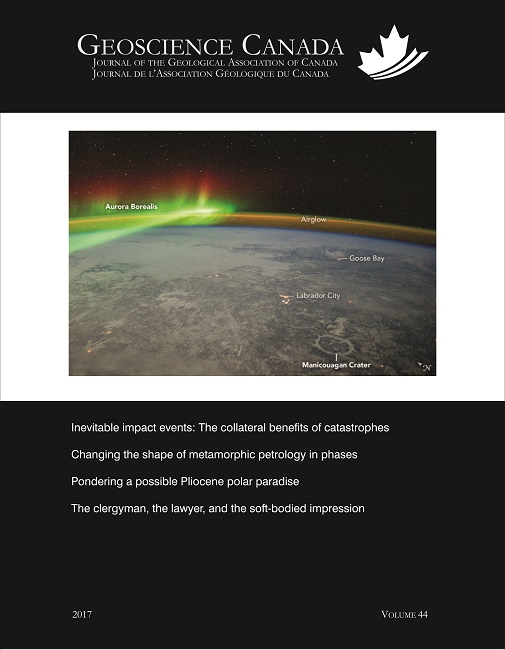Who Was the First Person Known to Have Discovered Fossils of the Precambrian (Ediacaran) Organism Aspidella terranovica?
Published 2017-04-20
How to Cite
Abstract
This article briefly examines the possible confusion pertaining to the discoveries of Precambrian (Ediacaran) fossils made in the self-governing British colony of Newfoundland in 1868 by the amateur naturalist, the Reverend Moses Harvey, and the subsequent description and naming of the fossil organism Aspidella terranovica in 1872 by Elkanah Billings, the father of Canadian paleontology. Both events could be misinterpreted as one transaction that began with the former event and ended with the latter event. Accounts published by Alexander Murray, the director of the Geological Survey of Newfoundland at the time, arguably may have inadvertently exacerbated the possibility for confusion. The determination of who first discovered fossils of A. terranovica and whose fossil material Billings primarily relied upon when he first described and named the taxon could be placed into doubt as a consequence. Although the confusion does not affect the undisputed priority that Billings holds in having described and named A. terranovica, the opportunity to remedy the confusion serves to benefit the historical record. The incomplete or ambiguous ascertaining and documenting of contextual information whenever an historically significant fossil discovery is made arguably may precipitate subsequent misinterpretations, distortions or omissions in the resulting historical narrative as it develops and becomes entrenched or mythologized in its retelling.
RÉSUMÉ
Cet article examine brièvement la confusion possible concernant les découvertes de fossiles Précambriens (Ediacaran) fabriqués dans la colonie Britannique autonome de Terre-Neuve en 1868 par le naturaliste amateur, le Révérend Moses Harvey, et la description et l'appellation suivantes de l'organisme fossile Aspidella terranovica en 1872 par Elkanah Billings, le père de la paléontologie Canadienne. Les deux événements pourraient être mal interprétés comme une transaction qui a commencé avec l'événement précédent et s'est terminée avec le dernier événement. Les comptes publiés par Alexander Murray, le directeur de la Commission Géologique de Terre-Neuve à l'époque, ont sans doute peut-être exacerbé par mégarde la possibilité de confusion. La détermination de qui a découvert les fossiles d'abord de A. terranovica et dont Billings s'appuyait principalement sur le matériel fossile dont il a d'abord décrit et nommé le taxon pourrait être mis en doute en conséquence. Bien que la confusion ne porte pas atteinte à la priorité incontestée que Billings détient en ayant décrit et nommé A. terranovica, la possibilité de remédier à la confusion sert à bénéficier du dossier historique. La constatation et la documentation incomplètes ou ambiguës de l'information contextuelle chaque fois qu'une découverte fossilifère historiquement significative peut être faite peut précipiter des interprétations, des distorsions ou des omissions subséquentes dans le récit historique résultant au fur et à mesure qu'il se développe et devient ancré ou mythologisé dans son récit.
